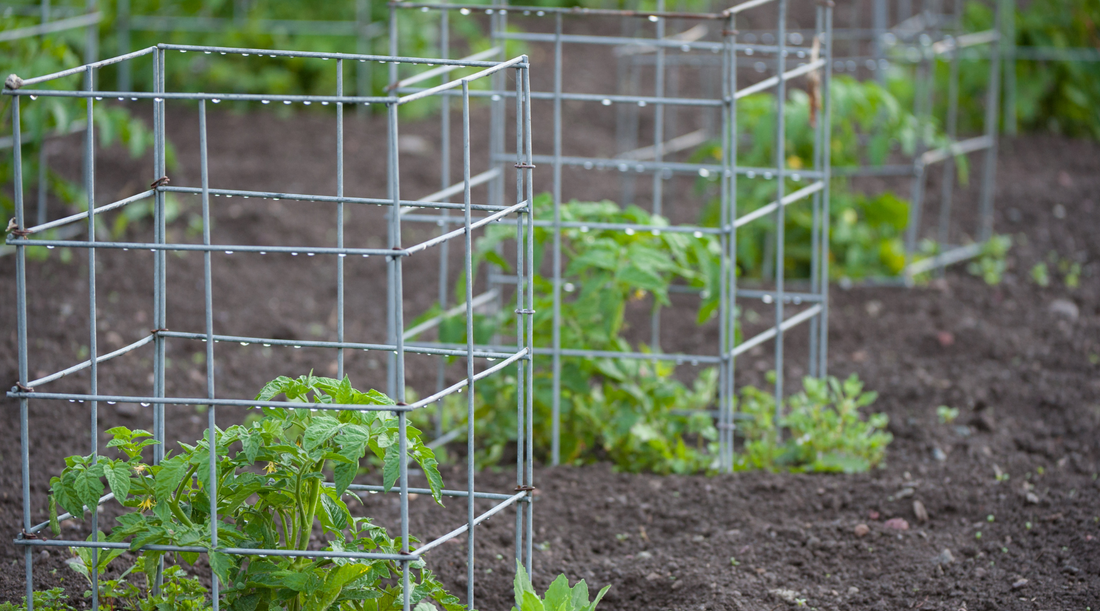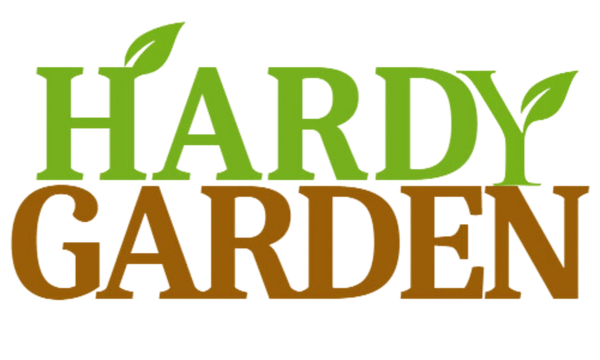
How to Choose the Best Plant Support
Gardening is more than just planting and seeing a seed develop; it's an art form. And, like all art forms, it has its own set of difficulties. One such problem, which sometimes goes unnoticed until it's too late, is ensuring that your plants grow erect, free of the tyranny of gravity and strong winds. After all, nothing is more heartbreaking than seeing your thriving tomato plant or beautiful peonies tipped over.
Plant supports are the unsung heroes of the garden. But with so many choices available, how can you determine which plant stakes is best for your prized vegetation? Prepare to have your green babies constantly standing tall and proud as we unroll the secrets of selecting the ideal plant support.
Introduction to Plant Support

Gardening will teach you that plants, like people, require occasional help. Why is is plant support vital? A toddler taking its first steps without instruction or a hand may fall. In addition, plant supports can help plants stay upright, get enough sunlight, and avoid harm, especially as they expand.
Plant supports are available in many sizes for different plants. The appropriate support can make all the difference for a delicate flower stem or a fruit-laden tomato plant branch. It's not just about keeping them upright—it's about better development, yield, and garden aesthetics.
Plants with heavy fruits or vine-like growth patterns need support. Even strong-looking plants sometimes need help, especially in unexpected weather like strong winds or heavy rainfall. They are crucial to a successful gardening, whether you're a beginner or an experienced gardener.
Why is Plant Support Essential?
Imagine a world where a moderate breeze or your growth could topple you every time you stood up. Many plants dwell there, especially when they get taller or yield fruits need plant support. Let's look at why these plant stakes are so important in a plant's life.

Upright Growth:
Just as we humans need a proper posture to function efficiently, plants too need to grow upward to optimize photosynthesis. Even a simple stakes ensure they don’t droop or sag, making the most of the sunlight they receive.
Protection from Elements:
Heavy rains, gusty winds, or even the weight of mature fruits can cause plants to bend, break, or even uproot. Plant supports act as shields, offering protection against these natural challenges.
Optimized Health:
Plants that sprawl on the ground are more susceptible to pests, diseases, and rot due to reduced airflow and damp conditions. Supports elevate them, promoting better health and reducing these risks.
Increased Crop Yields:
For fruit-bearing plants, a proper support system can directly influence the quantity and quality of the produce. By keeping fruits off the ground, supports ensure they grow uniformly, get ample sunlight, and stay free from soil-borne diseases.
Plant Supports Add Aesthetic Appeal:
Beyond the functional benefits, supports bring order and structure to a garden. Climbing plants weaving through trellises or roses held up with stakes can turn a garden into a visual masterpiece.
Space Management:
For those working with limited gardening space, vertical supports like trellises and stakes allow plants to grow upwards rather than outward, maximizing available space.
Ease of Harvest:
For vegetable gardens, supports make it simpler to spot and harvest produce. No more sifting through dense foliage; fruits and veggies are conveniently within reach.
Different Types of Plant Supports
Gardens provide a range of plants with different needs. In the same way that different plants need different fertilizers, different plants need different supports. finding the appropriate plant support can be like finding the ideal accessory for an outfit: utilitarian and beautiful. Here are the different types available:

Plant Stakes:
- Description: These are perhaps the most traditional and straightforward supports. They are generally tall and slender, driven into the ground to support individual plants as they grow.
- Best for: Young trees, tall flowering plants like lilies and dahlias, and vegetables like tomatoes and peppers.
Plant Cages:
- Description: These are typically cylindrical supports made of wire or other materials surrounding a plant, providing 360-degree support.
- Best for: Tomato plants are the poster child for cages, but they can also support peppers, eggplants, and some bushier flowering plants.
Plant Trellises:
- Description: A trellis is a lattice, often made of wood or metal, that supports plants growing vertically. Some are crafted beautifully which adds more aesthetic appeal to your garden. Others like trellis bench is double purpose it will serve you and your plant.
- Best for: Climbing plants like beans, peas, and cucumbers, and flowering vines such as clematis or morning glory.

Obelisks:
- Description: These are tall, usually pyramidal structures that support and add an ornamental touch to the garden.
- Best for: Roses, sweet peas, and other climbers that need more than just horizontal support.
Hoop Supports:
- Description: These arched supports, generally made of metal or sturdy plastic, prevent plants from falling outward.
- Best for: Perennials like peonies and some annuals that droop as they grow.
Grow-through Grids:
- Description: These are flat, grid-like structures placed over young plants. As plants grow, they pass through the grid, providing support.
- Best for: Perennials with a sprawling growth habit once they reach full size.
Pergolas and Arches:
- Description: Larger than most other supports, they are both functional and decorative, acting as garden centerpieces.
- Best for: Climbing roses, wisteria, and other large, woody vines.
Considerations When Choosing Plant Supports
It is more than just picking the first plant support in the store and hoping for the best. Understanding your plants' demands and their environment is a process. Consider these key factors:
Plant Type and Growth Pattern:
Ask yourself: Is my plant a climber, a sprawler, or a tall grower? Climbers might love trellises, while tall, singular plants often prefer stakes. Understanding your plant's natural growth pattern is the first step.
Durability and Lifespan of Plant Supports:
Will the plant supports last a single season or multiple years? Materials like metal or treated wood offer longevity, while untreated bamboo or certain plastics may degrade faster.
Flexibility vs. Rigidity:
Some plants require a bit of sway to develop strong stems, while others need firm, unyielding support. For instance, young trees benefit from stakes with a bit of give, while a heavy tomato plant requires a robust cage.
Installation and Adjustability:
Is the support easy to install, or does it require multiple tools and hands? Can it adjust as the plant grows, or is it a one-size-fits-all deal?
Environmental Impact:
Sustainable gardening is a growing trend. Choosing plant supports made from renewable or recyclable materials can reduce your environmental footprint.

Aesthetic Value of Plant Stakes:
Gardens aren't just about functionality. They're our patches of paradise. So, consider how the plant supports looks: does it complement your garden's style, or does it stick out like a sore thumb?
Space Constraints:
If you’re working with a small space or a container garden, plant supports that encourage vertical growth, like trellises, can be invaluable. On the other hand, sprawling gardens might accommodate various support types.
Budget:
Gardening, for many, is a passion, but it’s also essential to consider the cost. While certain supports might be pricier upfront, they may offer longevity, negating the need for frequent replacements.
Weather and External Conditions:
If you live in an area prone to strong winds, heavy rains, or even snow, your choice of support should be able to withstand these conditions without collapsing or deteriorating rapidly.
Safety:
Ensure the plant supports have no sharp edges that might injure you during installation or harm the plants as they grow.
These considerations ensure your plants get the support they need and your garden remains sustainable, beautiful, and harmonious. Since well-supported plants are happy, a garden full of happy plants is every gardener's dream!
Conclusion
Choosing the correct plant support is like laying the cornerstone while constructing a home. It's about helping them thrive and show off their aesthetic potential, not merely keeping them standing. Some need a light touch, others a forceful one. Therefore, knowing your plants' size, weight, and development trends is essential for choosing the optimum support system.
Keep in mind your plants' short-term and long-term requirements as you move on in your gardening endeavors. Choose robust materials that can weather the elements and accommodate any future expansion. And remember, plant life has a way of communicating its needs to you.
The finest plant support is the one that meets the plant's requirements and complements your overall gardening scheme. Your garden's structural supports can also change and improve over time. I wish your plants would thrive, reach great heights, and fill your garden with color and life for many years.
Visit Hardy Garden now and get the perfect plant support for your precious plants!
Happy Gardening!
